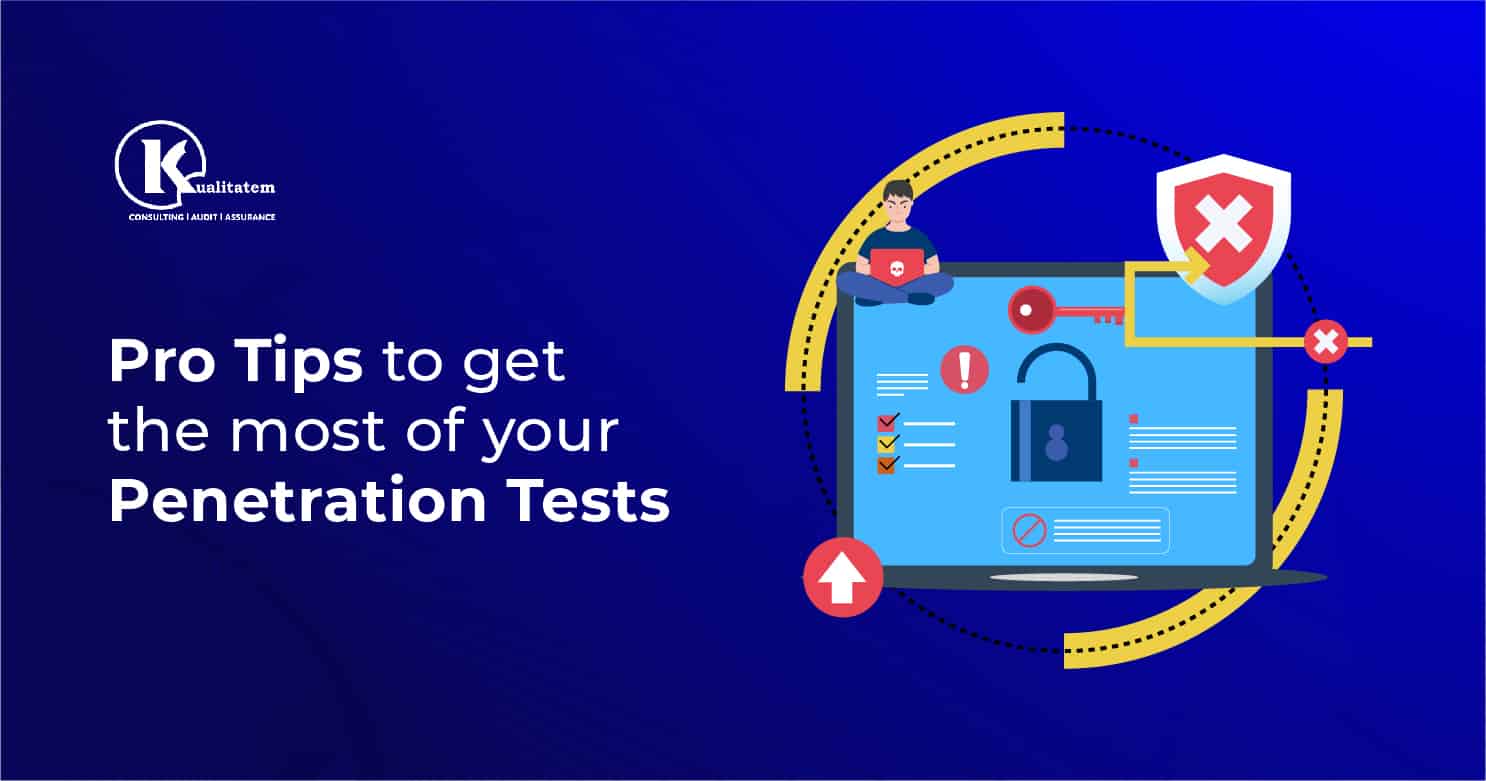Pro Tips to Get the Most of Your Penetration Tests

- January 15, 2021
- HibaSulaiman
IT security professionals are under constant pressure to demonstrate the effectiveness of their investment in security and to achieve maximum value from their security budgets. Investing in a regular pen test can be a hard pill to swallow. Organizations pay pen-testers to break into their systems, networks, or applications. So, they are conscious about making this investment that will be beneficial for their business in the long-run. IT security managers may not be surprised to find out that their ‘secure’ technology isn’t as secure as they thought. The ever-changing, complex environment may give birth to more vulnerabilities than they had expected. In addition, they may not even be sure what they need or who should perform their software testing. Although performing pen testing may be daunting for some, there is one thing research has proven, penetration testing is crucial to protect their IT assets.
Let’s discuss some issues with respect to pen tests, how scoping impacts the assessments, and how a penetration testing company can assist you in providing a thorough assessment of all your systems.
Penetration testing is used to determine how vulnerable your assets are. It helps you to take your security intelligence into your own hands instead of a hacker’s. It depicts the security strengths and weaknesses, allowing you to prioritize the risk levels. If a business has compliance requirements, then penetration tests help in aligning the organization’s security with these requirements. If your organization does not have compliance requirements, penetration testing can be a proactive way to see and analyze the loopholes in the security posture. As penetration testing is a simulated yet real-world testing process, it also provides your team a chance to practice incident response and avoid the downtime that a breach would cost in the future.
It is essential to consider all types of penetration testing and to consult with a qualified penetration testing company to decide which would be most beneficial for protecting the assets. Internal or external network penetration testing, web application pen testing, API testing, social engineering; there are many options available for an organization’s security efforts.
Define the Goals Clearly
Penetration testing is about protecting the business by testing all the information security activities. A pen tester takes the role of an attacker to find the vulnerabilities and exploits them to determine the risks to the business and gives recommendations to improve security based on the results of these findings. Attackers try to steal the critical data and their techniques are a means to an end. So when performing penetration testing, it’s not about the techniques used to exploit a vulnerability but about discovering where the business risk is the greatest. By understanding this from a more tactical perspective, pen testing is a good way to determine how well their security policies are actually working. When an organization is investing a lot of money in products, patchings systems, etc. pen-testing becomes extremely important. A pen-tester tries to bypass or neutralize the security controls.
Establish Realistic Expectations
With the understanding of objectives and potential threats, establish how much of a network can be tested and how deeply, considering your budget and time. It is crucial to keep in mind that motivated bad actors are not going to focus on certain parts of your system, so they don’t really want the testers to be limited. Simultaneously, they may not want to give them free rein. Obviously, a business wants creativity, but the security manager needs to be sure that testers understand clear boundaries (such as never to perform a denial of service attack on any production system).
Learn What They’re Doing
The efforts to understand the testers’ tools, techniques, and processes can help them to define parameters and expectations in a better way. You need an understanding of what goes into the testing to be able to ask questions about methodology and policy to identify all the testing approaches that may have been overlooked. In addition, they will be able to turn the findings of the engagement into meaningful action with increasing awareness of how the results were reached.
Network Knowledge
The more information that an organization can provide, and clearly communicate with the pen testers, the less time they need to spend determining the true scope of the networks and systems. Another critical aspect of an effective pen test is to have a clear point of contact who can be in constant communication with the testing team and ensure that security logs and alerts are addressed in time.
Anticipate the Threats
Since a penetration testing company knows about the industry and also keeps an eys on cybersecurity threats particular to different types of businesses. Identifying likely threats for the penetration testers can help in determining what they should try to do and how deeply. For instance, an industry may be more susceptible to insider threats, organized crime, etc. than the usual ones.
Choose a Trusted Partner
Once an organization has found a penetration testing team that does the job they want to be done and done well, work with them consistently. It is beneficial to develop an ongoing relationship with a testing group in the long run as they will come back to each engagement with a deeper understanding of the culture, infrastructure, and support systems.
Take-Home
Whatever your reason for a penetration test is to meet the compliance standards, it is necessary for security teams’ capabilities to determine control efficacy – a business should partner with experts who can thoroughly prepare the engagement and keep it well-informed of findings.











